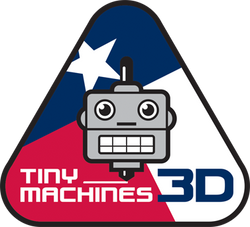In the realm of electronics and thermal management, heat sinks, solid-state relays (SSRs), and thermal paste play a critical role in ensuring efficient heat dissipation. These components are particularly important in 3D printers, where AC-powered bed heaters are utilized. In this blog post, we will explore the functions and benefits of heat sinks, SSRs, and thermal paste, with a focus on their application in 3D printer bed heaters.
Heat sinks
Heat sinks are passive cooling devices that absorb and dissipate heat generated by electronic components. In the context of 3D printers, heat sinks are commonly used to manage the heat generated by an SSR.
Working Principle
Heat sinks operate through thermal conduction, transferring heat from the heat source (the bed heater) to the heat sink and subsequently releasing it into the surrounding environment through conduction, convection, and radiation.
Heat Sink Considerations for SSRs used with 3D Printer Bed Heaters
When selecting a heatsink, it is crucial to consider factors such as size, material, and design. Opting for a heatsink with a larger surface area and high thermal conductivity, such as those made from aluminum or copper, can significantly enhance heat dissipation. Sometimes space is an issue, so if the 3D printer frame is made of metal, you can use direct mounting or a metal spacer as a heatsink.
Below is an added feature from Tiny Machines 3D for the Troodon 2.0 with Klipper, available now!
 |
 |
 |
|
Just a dab will do ya!
|
Tightened down, then removed to check thermal paste spread.
|
 |
|
This is just one of the many steps we take when preparing a Troodon 2.0 3D Printer before shipping to you!
|
Solid State Relays (SSRs)
SSRs offer a reliable and efficient alternative to traditional electromechanical relays, making them an ideal choice for controlling the power supply to AC-powered bed heaters in 3D printers. a.
Advantages of SSRs
SSRs provide several benefits in the context of 3D printer bed heaters:
- Faster switching speeds: SSRs enable rapid and precise control of the power supply, allowing for more accurate temperature regulation.
- Enhanced reliability: As SSRs have no mechanical contacts, they have a longer lifespan and reduced risk of wear and tear compared to electromechanical relays.
- Noise reduction: Unlike traditional relays, SSRs operate silently, eliminating the clicking sound often associated with relay switching.
- Optoisolation: SSRs offer electrical isolation between the control and load circuits, protecting sensitive components from voltage spikes and reducing the risk of damage.
Thermal Paste
Thermal paste plays a crucial role in maximizing the thermal coupling between the heating element and the heat sink in a 3D printer bed heater.
Functions of Thermal Paste- Filling air gaps: Thermal paste fills microscopic air gaps between the heating element and the heat sink, ensuring efficient heat transfer.
-
Improving thermal conductivity: The high thermal conductivity of thermal paste facilitates the transfer of heat from the heating element to the heat sink, preventing hot spots and maintaining uniform temperature distribution.
Heat Sink Considerations for SSRs
When using SSRs in conjunction with heat sinks for 3D printer bed heaters, it is essential to ensure proper thermal management for the SSR itself. SSRs can generate heat during operation, and a dedicated heat sink or heat sink compound can be used to dissipate this heat effectively, preventing overheating and maintaining optimal SSR performance.
Conclusion
Heat sinks, SSRs, and thermal paste are crucial for managing heat in certain 3D printer applications. By selecting appropriate heat sinks, utilizing SSRs, and applying thermal paste correctly, you can achieve efficient heat dissipation and reliable printing performance. Remember to consider size, material, and installation for heat sinks, address SSR heat generation, and apply thermal paste for uniform heat transfer. Proper thermal management extends component lifespan and ensures optimal temperatures, resulting in high-quality prints.
Happy printing!
